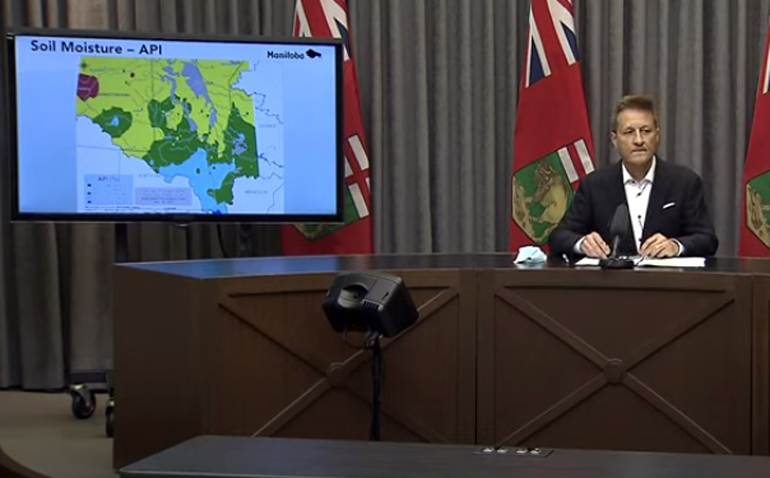Manitoba Infrastructure Minister Ron Schuler says it is very important that southern Manitoba receives at least an average amount of snow this year. That is because of below-normal soil moisture levels and water levels heading into winter.
Manitoba Infrastructure's Hydrologic Forecast Centre has released its 2021 Fall Conditions Report which indicates soil moisture levels at the time of freeze-up are below normal in most Manitoba basins.
Most river basins in the province received below-normal precipitation between May and October and above-normal temperatures in the summer and fall months with some improvement in precipitation in November. Because of this, soil moisture at the time of freeze-up for most Manitoba basins is generally near normal to below normal.
The Report suggests the Red River is expected to remain near normal flows and levels within the Red River valley in the period prior to the spring runoff. The Red River at Emerson is flowing at 1,800 cubic feet per second (cfs), which is above the normal level of 1,522 cfs.
"And that has to do with the weather event that hit around the Fargo area," he says.
Most major lakes in Manitoba with the exception of Lake Manitoba are at below normal to well-below normal levels for this time of the year but within their operating ranges. Lake Manitoba is below its operating range and near record-low levels for this time of year.
Schuler says in a normal winter, southern Manitoba will receive an average of 100 centimetres of snow.
"If we don't get at least one hundred centimetres of snow, we may be in front of you in spring having a fairly dire report," says Schuler. "We are facing the potential of a fairly catastrophic event of nature."
He warns that if we get low snowfall amounts, above-average temperatures and a lot of sunshine, Manitoba could be in store for a very difficult growing season in 2022.
"The ideal winter now would be very cold, which is normal for Manitoba," he says. "Lots of snow, minimal sunshine and a normal melt. Not that that's my wish, but that would be best for what we might be facing in spring."
The long-term weather outlooks from Environment Canada and the U.S. National Weather Service indicate the development of La Nina weather conditions globally. La Nina weather conditions generally favour normal to below-normal precipitation for most Manitoba basins with a slight chance of above-normal precipitation in northern Manitoba.












